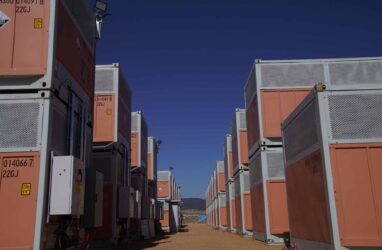Feed aggregator
Microsoft buys voluntary carbon removals from Kenyan agroforestry project
Euro Markets: Midday Update
Bezos Earth Fund allocates $5 mln for conservation efforts in the Congo Basin
Townsville to be home of vanadium flow battery manufacturing
The post Townsville to be home of vanadium flow battery manufacturing appeared first on RenewEconomy.
EU cuts toxic air limits but still falls short of WHO guidelines
Rules hailed as once-in-a-generation chance to improve air quality but loopholes will let member states delay by up to a decade
The European Union has agreed to set stricter limits on the toxic particles and dangerous gas that dirty its air, but will not aim for the levels that doctors and economists recommend.
The new rules slash the yearly limits for fine particulates known as PM2.5 – which wreak havoc on the whole body because they are small enough to slip into the bloodstream – from 25 µg/m³ to 10 µg/m³, and for nitrogen dioxide, a gas that hurts the lungs, from 40 µg/m³ to 20 µg/m³.
Continue reading...Gold Standard expands voluntary soil carbon crediting scope
Taiwanese emitters with SBTi-aligned plans may be levied less for emissions -minister
Butterfly genomes have barely changed for 250m years, study reveals
Analysis gives clues as to why butterflies and moths have been resilient through dramatic changes on Earth – and could help with future conservation
The genomes of butterflies and moths have remained largely unchanged for more than 250m years despite their enormous species diversity, according to a new study published in the journal Nature Ecology & Evolution.
In the face of rapid environmental changes in the 21st century, the researchers said the analysis gives clues as to how Lepidoptera – the order of winged insects that contains butterflies and moths – have been so resilient throughout dramatic changes on Earth.
Continue reading...FEATURE: EU industries want policy clarity, finance to help meet Green Deal goals
Australia’s mining giants take different paths to clean steel
Major bank sets capitals markets emissions targets
Senior offset sourcing specialist leaves South Pole for Sydney competitor
Researchers call for voluntary forest carbon credits to be included in UK ETS
Hundreds of green groups urge EU, G7 to close Russian energy sanction loopholes
Clean investments must double for EU to meet its 2030 climate targets -research
Japanese trading house to subsidise low-friction paint for maritime decarbonisation
Australian gas major sees CCS covering most future emissions
‘A picture of hell’: inside the UK’s nuclear reactors – in pictures
Armed with a Geiger counter, Michael Collins was given access to multiple power stations across the UK – he found them tranquil, beautiful and sinister
Continue reading...Floating spiders and insect-eating plants: leaky dams revive Dorset’s bogs
Porous dams in Purbeck are being used to ‘rewet’ the mires, bringing a richer landscape for flora and fauna
Leaky dams may not sound ideal but they are being used to great effect on dried-out marshland in the English West Country to produce fresh habitat for carnivorous plants and a spider that whizzes over the surface of water to grab prey.
Bales made out of heather and bunds constructed out of peaty soil and timber are being used to create porous dams on two mires, Agglestone and Greenlands, in Purbeck, Dorset.
Continue reading...Some vehicles on Australian roads use 20% more fuel than claimed – which models are the worst?
BMW X3 has biggest gap between manufacturer’s laboratory consumption claims and real-world testing in latest Australian Automobile Association data
- Follow our Australia news live blog for latest updates
- Get our morning and afternoon news emails, free app or daily news podcast
Cars driven in Australia consume up to 20% more petrol than manufacturers are claiming, according to a program that tests “real-world” on-road fuel efficiency with laboratory calculations.
The Australian Automobile Association (AAA) testing – funded by the federal government – also found four of the 13 vehicles tested in its latest round of compliance checks exceeded regulatory limits for oxides of nitrogen or carbon monoxide.
Continue reading...



